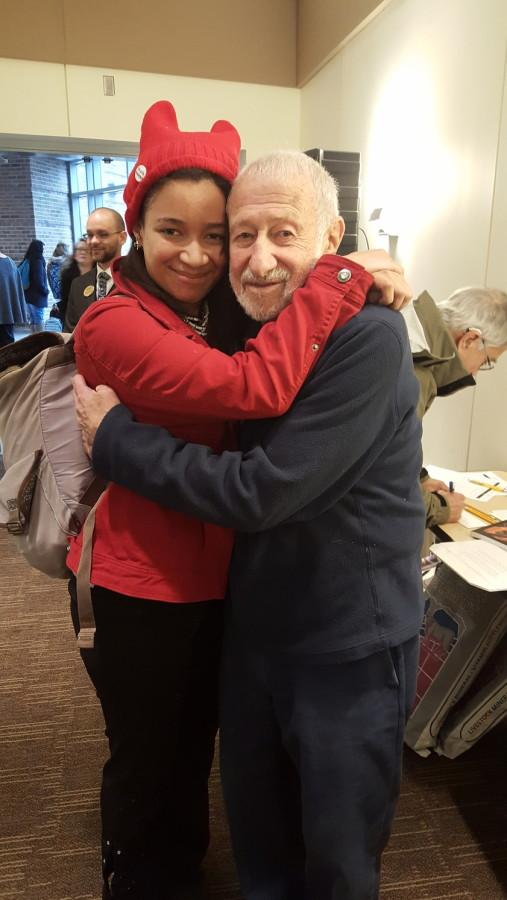(THE PICKET)—Mark Strauss came to Shepherd University on Tuesday, Dec. 1, to talk about his experience in the Holocaust during World War II. He enthralled his audience with his account of the difficulties he faced between the ages of 11 and 14, between the years 1941 and 1944.
“The Germans were already mobile and the Jews were being individually murdered. There was no mass murder yet,” said Strauss as he begins his story.
He talked about the time that he was out on the street and he saw a group of German soldiers and civilians surrounding a tall man with a gash on his forehead. The man was cowing on the ground, trying to protect himself against the blows that rained down upon him. As Strauss watched in confusion, the group mercilessly beat the man to death, leaving this beastly deed imprinted in Mr. Strauss’ mind for the rest of his life. This was only the beginning of the unjustified life he would be forced to live.
“By this time, out of a community of almost 100,000 Jews, almost 2,000 were murdered,” Strauss said. “Among these statistics was the first casualty of my family: my father’s youngest brother.”
Between 1941 and 1942, most of the Jews in Strauss’ town were murdered.
“This was before the concentration camps, when the Death Commanders traveled from house to house in Eastern Europe, trying to find Jews,” he said. “The Death Commanders went from house to house getting people to tell them who was Jewish.”
His grandparents were taken during this time.
When the Jews were taken, the soldiers said that they were relocating them, but they were lying. Most of the Jews were lined up on river banks and murdered by firing squads.
Soon after this, Strauss and his parents were taken to a ghetto. In the ghetto, the Germans shut off the water that flowed through that part of town, so the Jews couldn’t use any form of plumbing. They couldn’t get any water besides the little that dribbled out of old, rusted pipes, and they had to defecate on the balconies because the plumbing didn’t work.
Eventually Strauss’ father smuggled him out of the ghetto. He was taken in by an elderly couple who hid him in a 10-by-7 room, where all he could do was sit on a cot or on the floor. By the time he was 14, he was finally liberated by Soviet troops.
Later, when he came over to America, he worked with the U.S. Navy as a scientist. Strauss has had to overcome PTSD and muscular dystrophy due to the horrors he has been through.
To cope with the atrocities he faced, Strauss turned to writing and painting. Some of his most noted works deal with the demons of his past experiences from the holocaust.

